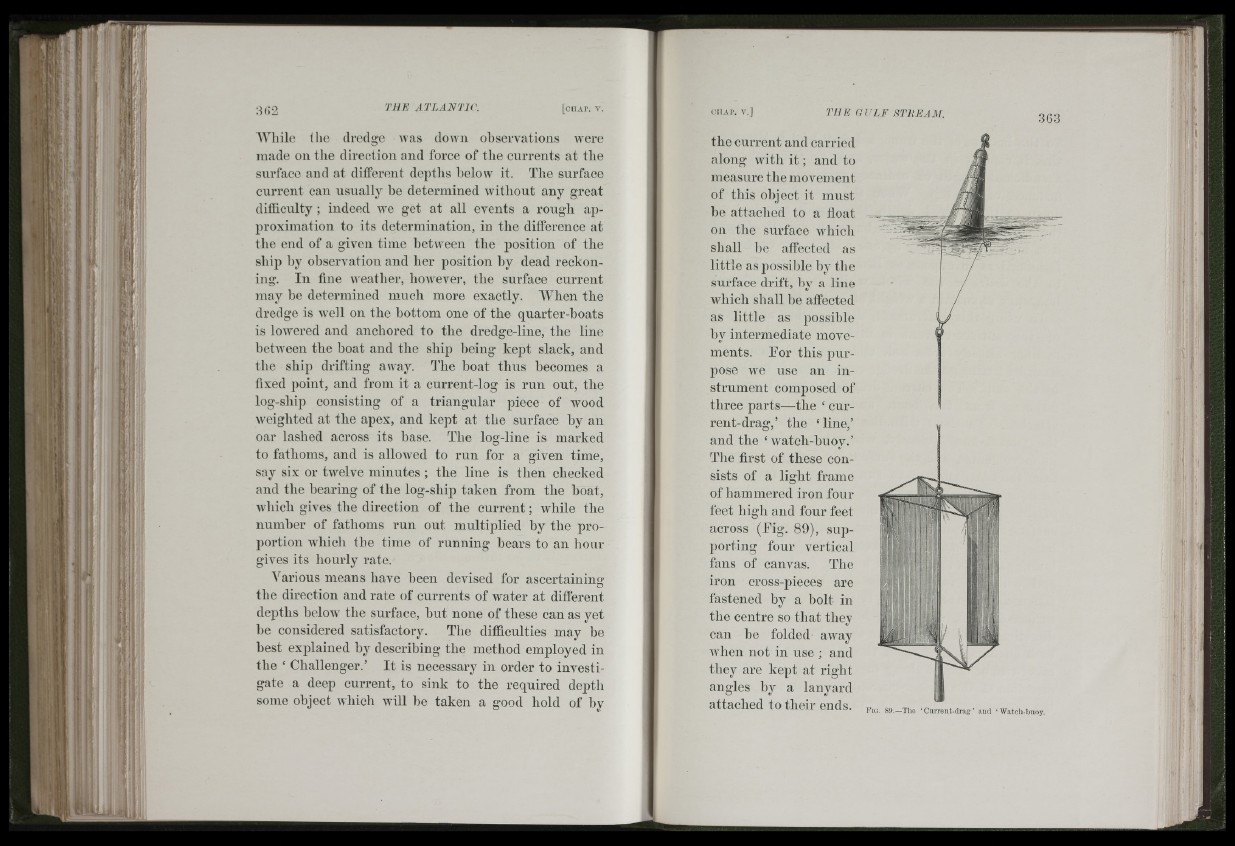
lii!"'*
While tho dredge Avas doAvn observations Avere
made on the direction and force of the currents at the
surface and at different depths below it. The surface
current can usually he determined without any great
difficulty ; indeed Ave get at all events a rough approximation
to its determination, in the difference at
the end of a given time hetween the position of the
ship hy observation and her position by dead reckoning.
In fine AA eather, hoAvever, the surface current
may be determined much more exactly. When the
dredge is Aveil on the hottom one of the quarter-boats
is loAvered and anchored to the dredge-line, the line
betAveen the boat and the ship being kept slack, and
the ship drifting away, d’he boat thus becomes a
fixed point, and from it a current-log is run out, the
log-ship consisting of a triangular piece of Avood
Aveighted at the apex, and kept at the surface hy an
oar lashed across its base. The log-line is marked
to fathoms, and is alloAved to run for a given time,
say six or twelve minutes ; the line is then checked
and the hearing of the log-ship taken from the boat,
Avhich gives the direction of the enrrent; while the
numher of fathoms run out multiplied by the proportion
AA'hich the time of running hears to an hour
gives its hourly rate.
Various means have heen devised for ascertaining
the direction and rate of currents of water at different
depths heloAv the surface, hut none of these can as yet
be considered satisfactory. The difficulties may be
best explained hy describing the method employed in
the ‘ Challenger.’ I t is necessary in order to investigate
a deep current, to sink to the required depth
some object Avhich will he taken a good hold of hy
3 6 3
the current and carried
along with i t ; and to
measure the movement
of this object it must
be attached to a float
on tlie surface which
shall he affected as
little as possible by the
surface drift, hy a line
which shall be affected
as little as possible
by intermediate movements.
For this p u r pose
we use an instrument
composed of
three parts—the ‘ curreut
drag,’ the ‘ line,’
and the ‘ w atch-buov.’
The first of these consists
of a light frame
of hammered iron four
feet high and four feet
across (Fig. 89), supporting
four vertical
fans of canvas. The
iron cross-pieces are
fastened by a holt in
the centre so th a t they
can be folded away
Avhen not in use ; and
they are kept at right
angles by a lanyard
attached to their ends. F i g . 89.—The ‘ C urrent-drag ’ aud ‘ Watch-buoy.
. 'Jj
i ' l ,a !r I J